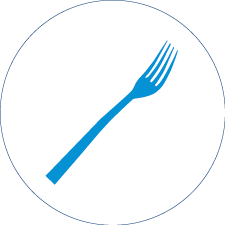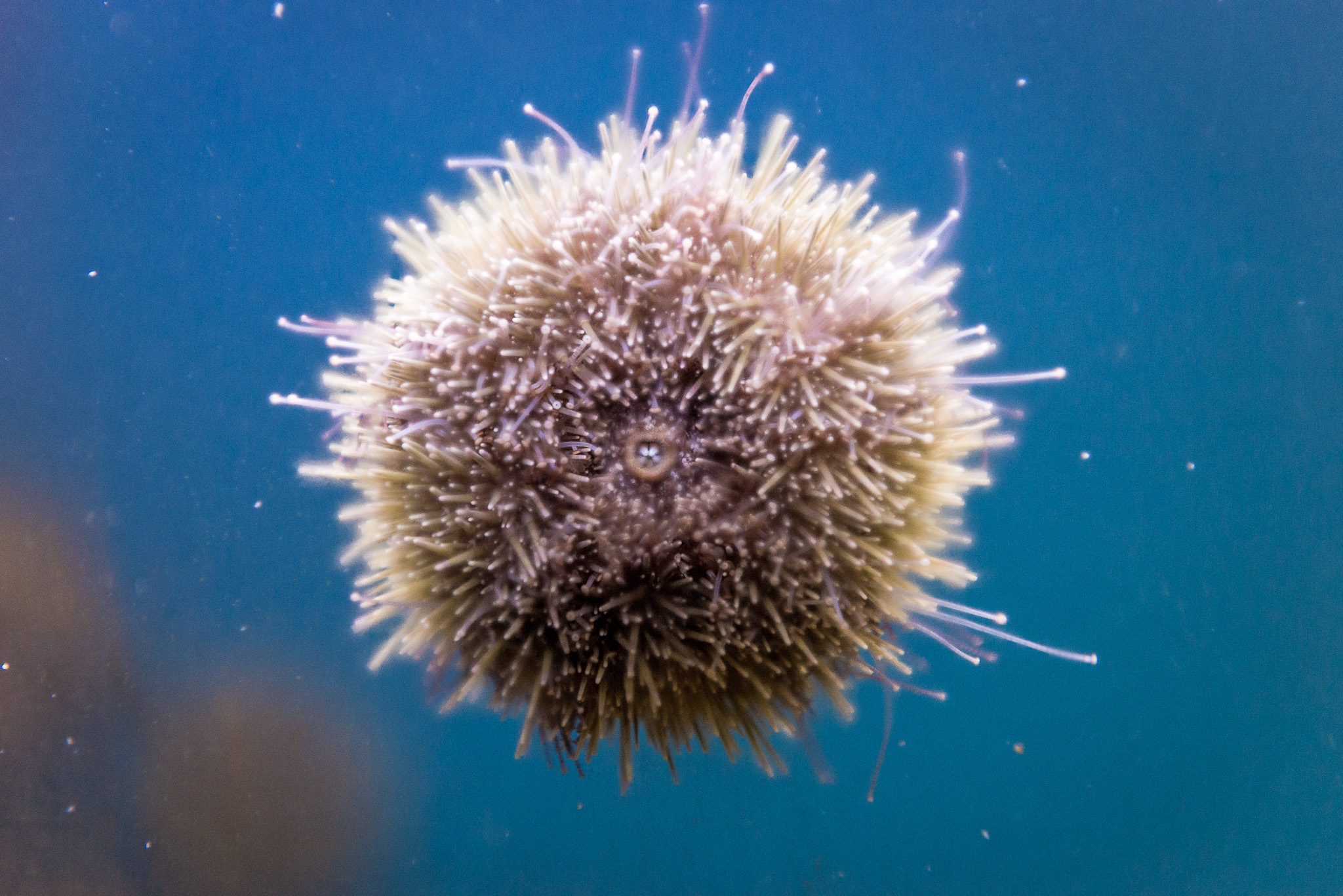
SIZE:
Diameter between 50 and 60 mm, can go up to 100 mm.
LIFE EXPECTANCY:
20 to 25 years.
LIFE CYCLE:
In the Gulf of St. Lawrence, the green sea urchin reproduces in April and May. This takes place in May and June in the St. Lawrence estuary. Males and females release their gametes in the water column, where fertilization occurs. After hatching, the egg releases a small larva that floats around for two to five months to eventually transform and settle on the seafloor.
The green sea urchin is shaped like a demi-sphere and is covered with long green spines. Its structure, called a test, is rigid and comprises calcium carbonate plaques that are bound together. Its colour varies from pale green to dark green, with occasional shades of red. The urchin’s buccal appendage, known as Aristotle’s lantern, has five teeth in the ventral location. The anus is on the dorsal side. To move around, the sea urchin uses its spines and small tubes called podia.
Coastal zone, down to 800 m depth.
The green sea urchin favours cold waters.
A carpet of sea urchins
The green sea urchin is the invertebrate most present in the shallow rocky environments of eastern Canada. This presence influences the seaweed environment, which is grazed by sea urchins. Sea urchins are particularly fond of kelp. Fortunately, some seaweeds, such as sieve kelp, are more resilient.
PREYS:
Seaweeds
Mussels
Organic matter
PREDATORS:
Lobsters
Crabs
Sea stars
Spotted wolffish
Atlantic wolffish
Seabirds
MACHINES:
Hand harvesting, whelk crates.
REGULATIONS:
Fishing effort management:
- Minimum harvest size of 50 mm
- Different fishing zones
- Specified fishing season
- Fishing zones
- Quotas
Sea urchin fishing started in the 1990s and developed slowly. In addition to fishing, sea urchin farming is gradually gaining in importance. For the time being, sales are mainly to Asian markets.
Green sea urchin is a Smarter seafood-listed species.
BENEFITS:
Green sea urchins are rich in protein and minerals, with high levels of omega-3 fatty acids, which are well known for their cardiovascular health benefits.
LET’S COOK:
Green sea urchins are harvested for their gonads, which are their reproductive organs. This is the part that is renowned for its exquisite taste: slightly salty and iodized. Its texture is somewhat creamy and smooth.
OUR CULINARY ADVICE:
- Serve raw with a bit of lemon/lime juice, or with shallots and salt.
- The gonads can also be boiled, fried or steamed. They are also delicious in sauces, soups, or omelettes.






